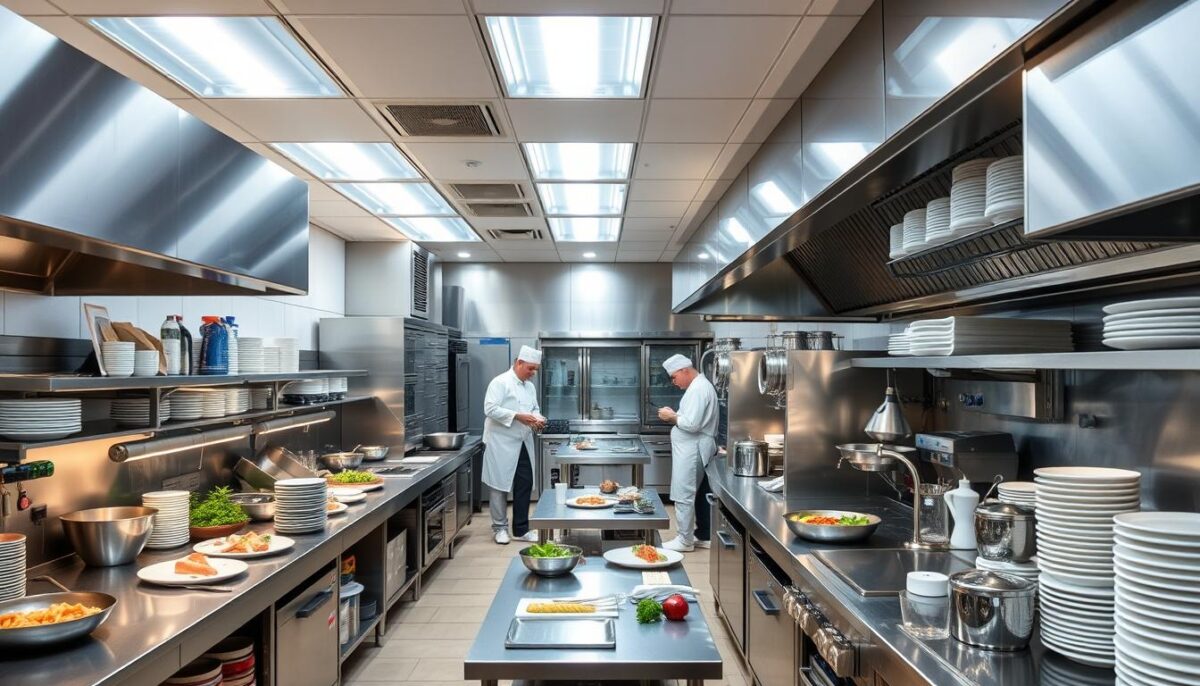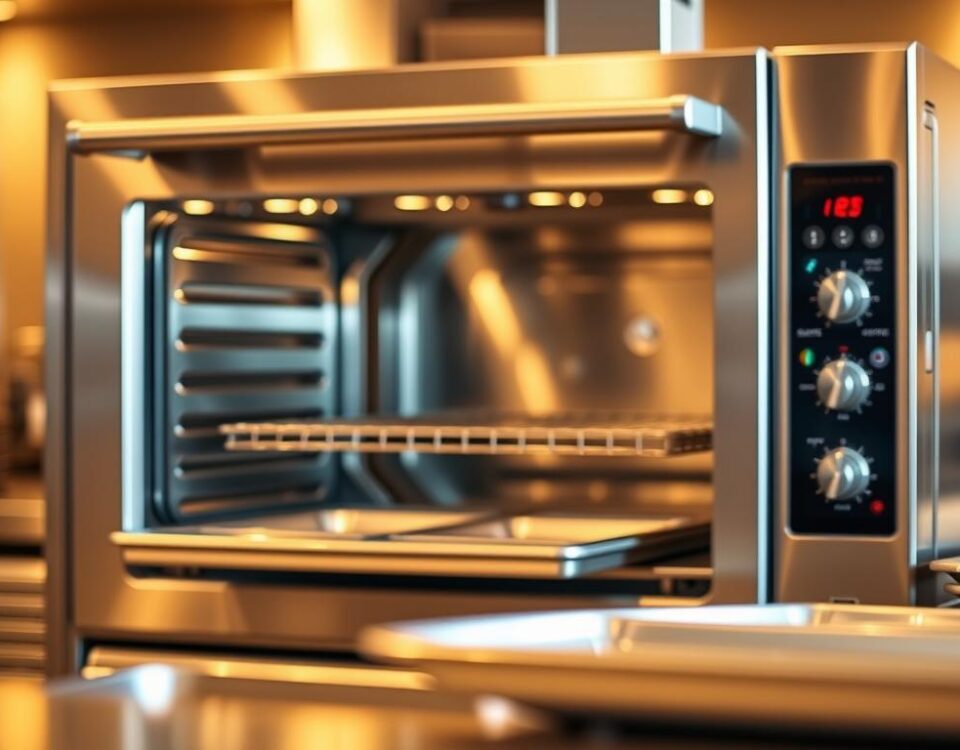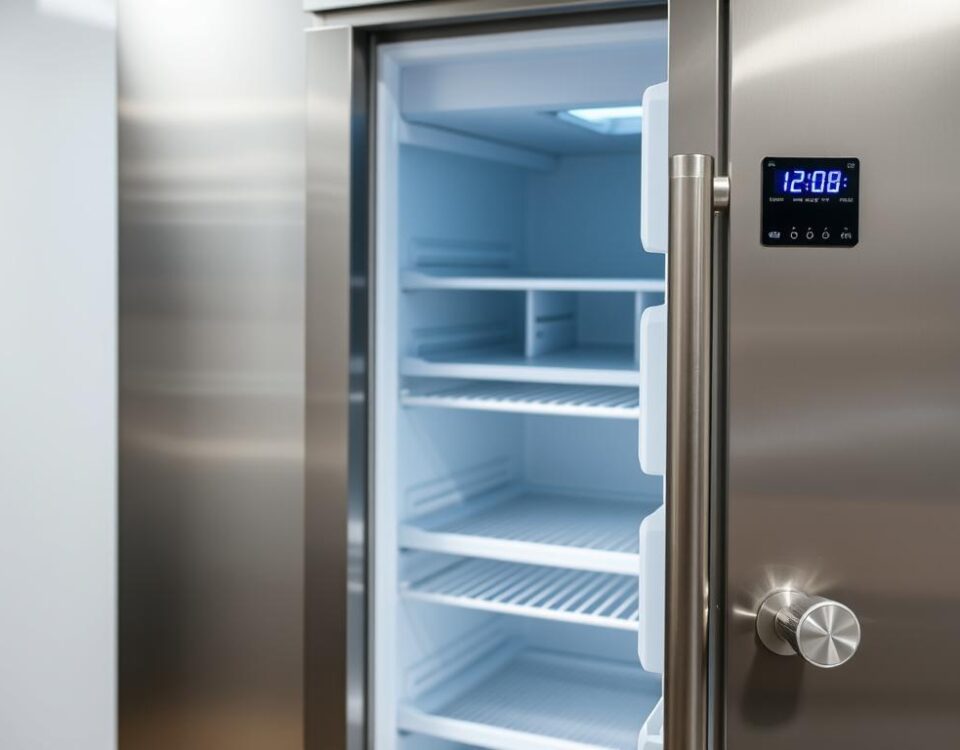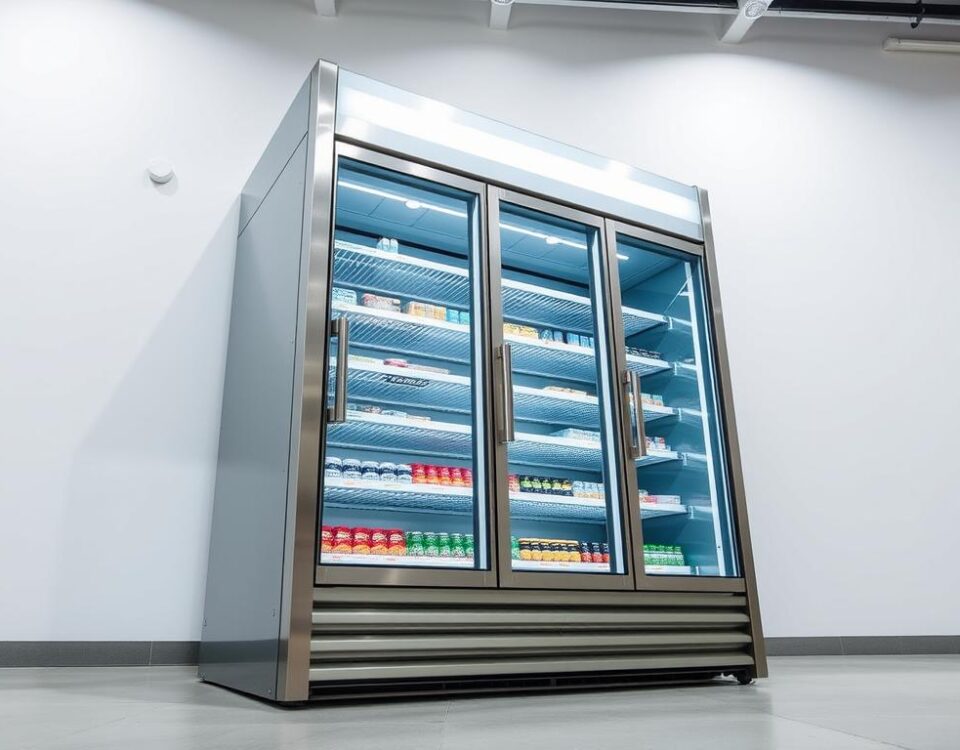
6 Proven Tips to Save Big on Used Restaurant Equipment
July 19, 2025
6 Hidden Benefits of Restaurant Inventory Software That Boost Profit Margins
July 20, 2025As a restaurant owner, securing the right financing can be a game-changer. I recall a local eatery that managed to expand its operations by leveraging alternative funding sources, a move that nearly doubled its customer base. Surprisingly, a significant number of restaurants struggle with securing adequate funding because they’re only aware of traditional financing routes.
Did you know that the restaurant industry faces unique financial challenges that require specialized funding solutions? Many owners are unaware of the financing options available beyond conventional bank loans and personal savings. Understanding these alternatives can be crucial for overcoming cash flow challenges or launching your business successfully.
I’m about to share six unconventional financing methods tailored to the restaurant business model that could help you achieve your goals. What if you could secure the necessary funds without the typical frustrations of traditional lending?
Key Takeaways
- Discover alternative funding sources beyond traditional bank loans.
- Learn how to overcome cash flow challenges with specialized financing.
- Understand the unique financial challenges faced by the restaurant industry.
- Explore six unconventional financing methods for your business.
- Find out how to qualify for financing even with credit challenges.
Understanding Restaurant Financing Challenges
Restaurant financing is a complex process, influenced by factors such as cash flow and interest rates. As a restaurant owner, understanding these challenges is crucial for securing the right financing. The unique business model of restaurants often poses difficulties in obtaining traditional financing.
Why Traditional Financing Often Falls Short for Restaurants
Traditional banks often have stricter eligibility requirements, which can be challenging for restaurants to meet. The high-risk nature of the restaurant industry, coupled with high startup costs and thin profit margins, makes traditional lenders view restaurants as high-risk investments. This leads to stricter lending requirements and higher interest rates.
For instance, banks typically require two or more years of business history for restaurant loans, creating a catch-22 for new restaurant owners who need capital to establish that history. Moreover, traditional financing channels often misunderstand the unique business model of restaurants, making it difficult for owners to secure appropriate funding.
The Importance of Exploring Alternative Funding Sources
Alternative funding sources have emerged to address the gaps in traditional financing, offering more flexible terms and industry-specific understanding. These alternative lenders provide faster approvals and more adaptable repayment schedules, which can be beneficial for restaurants with fluctuating cash flows.
Exploring alternative funding options isn’t just a backup plan—it’s often the most strategic approach for restaurant businesses with their unique cash flow patterns and capital needs. By considering alternative lenders, restaurant owners can find financing solutions that better suit their business requirements.
How Restaurant Business Loans Differ from Standard Small Business Loans
I’ve observed that restaurant loans differ significantly from other business loans in several key aspects. The unique demands of the restaurant industry, including high startup costs for kitchen equipment and commercial real estate, necessitate specialized financing solutions.

One of the primary differences lies in the loan amounts required by restaurants. These businesses often need larger loans due to the substantial costs associated with commercial kitchen equipment, specialized renovations, and food service infrastructure. For instance, a restaurant might need to finance a commercial oven, refrigeration units, or even the construction of a dining area.
Unique Requirements for Restaurant Funding
Restaurant funding has distinct requirements that set it apart from standard small business loans. For example, some restaurant funding options, like equipment loans, use kitchen equipment as collateral. This is different from other small business loans that may require personal assets as collateral. Additionally, restaurant loans often feature different repayment structures that accommodate seasonal fluctuations and the high percentage of credit card transactions in the industry.
Key differences in restaurant loan requirements include:
- Higher loan amounts due to the substantial costs of kitchen equipment and commercial real estate
- Specialized collateral requirements, such as kitchen equipment
- Repayment structures that accommodate seasonal fluctuations
Industry-Specific Considerations Lenders Evaluate
When evaluating restaurant loan applications, lenders consider industry-specific metrics that aren’t relevant to other small businesses. These include seat turnover rates, average check size, and food cost percentages. Understanding these factors is crucial for restaurant owners seeking financing, as they directly impact loan approval and terms.
“Lenders are increasingly looking at the unique aspects of restaurant operations when making financing decisions,” highlighting the need for restaurant owners to be prepared with detailed financial information and a solid business plan.
By recognizing these differences and understanding the unique requirements for restaurant funding, restaurant owners can better navigate the financing landscape and secure the capital they need to succeed.
Equipment Financing: A Hidden Gem for Restaurant Owners

For many restaurant owners, equipment financing is a lifeline that helps them acquire necessary kitchen equipment without draining their working capital. Equipment financing via loans or leases is another way to finance a restaurant, offering flexibility and preserving cash flow.
How Equipment Loans and Leases Work
There are two primary ways to finance equipment: via leases from equipment vendors or using the equipment you own as collateral for a commercial loan. Leasing equipment is very common in restaurants as it lowers upfront costs and can be approved even with less-than-perfect credit.
With equipment financing, the equipment itself serves as collateral, making approval easier to obtain. This is particularly beneficial for new or growing restaurants that may not have an extensive credit history.
Benefits of Financing Kitchen Equipment Separately
Financing kitchen equipment separately from other business funding offers several advantages. It allows restaurant owners to preserve their primary credit lines for operational needs and emergencies. Additionally, equipment loans and leases often come with fixed interest rates and predictable monthly payments, making budgeting more manageable.
- Preserves Working Capital: Acquire essential kitchen equipment without depleting working capital.
- Easier Approval: The equipment serves as collateral, easing the approval process even with less-than-perfect credit.
- Predictable Payments: Equipment loans typically offer fixed interest rates and predictable monthly payments.
- Maintenance Packages: Some equipment leasing options include maintenance packages, reducing unexpected repair costs.
- Structured Terms: Financing terms can be aligned with the equipment’s useful life, ensuring you’re not paying for items long after they’ve been replaced.
Many equipment vendors offer their own financing programs with competitive rates and simpler application processes than traditional bank loans, making it easier for restaurant owners to get the equipment they need.
Merchant Cash Advances: Quick Capital with a Twist

Merchant cash advances have emerged as a rapid financing solution for restaurants facing cash flow challenges. This financing option provides quick access to capital, often within 24-48 hours, making it ideal for emergency situations.
Understanding the Unique Repayment Structure
A merchant cash advance (MCA) is an advance on your future credit card sales. Repayments are made directly from your daily credit card sales, creating a flexible repayment structure that adjusts to your restaurant’s revenue fluctuations. This means that during slower periods, your MCA payments decrease, providing relief when you need it most.
The qualification process for MCAs focuses primarily on your credit card processing volume rather than credit scores or time in business. This makes MCAs accessible to newer restaurants or owners with credit challenges.
When MCAs Make Sense for Restaurant Cash Flow
While MCAs typically carry higher costs than traditional financing, with interest rates sometimes as high as 300% APR, they can be beneficial for short-term needs. I’ve seen MCAs work well for emergency equipment replacement, inventory purchases before high seasons, or taking advantage of limited-time opportunities.
- MCAs offer one of the fastest ways for restaurants to access capital, often providing funds within 24-48 hours.
- Unlike traditional loans, MCAs are repaid through a percentage of your daily credit card sales.
- The flexible repayment structure of MCAs can be particularly valuable for seasonal restaurants.
- I advise restaurant owners to carefully calculate the effective cost of an MCA and use them strategically.
- Many restaurant owners use MCAs as a bridge financing solution while working to qualify for lower-cost, long-term financing options.
To maximize the benefits of an MCA, it’s crucial to understand its unique repayment structure and associated costs. By doing so, restaurant owners can make informed decisions about when to use this financing option to support their business needs.
Crowdfunding: Turning Customers into Investors

By leveraging crowdfunding, restaurant owners can not only raise capital but also build a loyal customer base. This innovative financing method allows restaurateurs to share their vision with the community, garnering support from people who believe in their concept.
Crowdfunding platforms have emerged as a powerful tool for restaurants to secure funding without the constraints of traditional financing methods. With crowdfunding, your credit score doesn’t matter, and you won’t have to repay the funds, making it an attractive business financing option.
Successful Restaurant Crowdfunding Strategies
To succeed in crowdfunding, restaurants must present a compelling story and offer attractive incentives. Successful campaigns typically involve tiered rewards that appeal to different levels of contributors, from branded merchandise to exclusive dining experiences.
I’ve watched crowdfunding emerge as a powerful financing tool that simultaneously raises capital and builds a dedicated customer base before your restaurant even opens its doors.
Creating Compelling Incentives for Contributors
Creating the right incentives is crucial for a successful crowdfunding campaign. Restaurants can offer a range of rewards, such as free meals, recipe books, or VIP access to events once the restaurant is open. The key is to create a sense of belonging among contributors, turning them into investors who are emotionally invested in the restaurant’s success.
Beyond just raising money, crowdfunding creates brand ambassadors who are emotionally invested in your restaurant’s success and will help spread the word throughout your community.
Platforms like Kickstarter, Indiegogo, and specialized food business platforms offer different structures and audience demographics that may better align with your restaurant concept. By choosing the right platform and crafting a compelling campaign, restaurants can secure the funding they need while building a loyal customer base.
Industry-Specific Restaurant Financing Options
Restaurant owners now have access to a variety of financing options designed specifically for their business needs. The restaurant industry is complex, with unique challenges that require tailored financial solutions. As a result, industry-specific financing options have emerged to address these needs.
Restaurant Technology Company Financing Programs
Many restaurant technology providers, such as Toast and SpotOn, now offer financing programs specifically designed for their customers. These programs often feature streamlined approval processes because the lender already has visibility into the restaurant’s sales data through their systems. For instance, point-of-sale system companies, online ordering platforms, and reservation systems offer financing options that are integrated with their services. This integration enables a more efficient financing process, making it easier for restaurant owners to access the funds they need.
Key benefits of these technology-based financing options include:
- Streamlined approval processes
- Integrated sales data for more accurate lending decisions
- Flexible repayment terms based on sales performance
Food Supplier Credit Programs and Financing
Food suppliers and distributors are increasingly offering inventory financing and flexible payment terms to established restaurant clients. These credit programs can significantly improve cash flow for restaurants, enabling them to manage their inventory more effectively. By leveraging these financing options, restaurant owners can better navigate the challenges of the industry.
The advantages of food supplier credit programs include:
- Improved cash flow management
- Flexible payment terms
- Enhanced inventory management capabilities
By exploring these industry-specific financing options, restaurant owners can find the financial support they need to grow and succeed in a competitive market.
Restaurant-Focused Grants and Microloans

Restaurant-focused grants and microloans offer a lifeline to entrepreneurs in the food industry. These funding options can be crucial for starting or expanding a restaurant business.
Demographic-Specific Grant Opportunities
Many restaurant owners can benefit from demographic-specific grant opportunities. These grants are designed to support businesses owned by individuals from underrepresented groups, including women, veterans, people of color, and members of the LGBTQ+ community. For instance, organizations like the James Beard Foundation and Golden Seeds offer funding programs that cater to diverse business owners.
Key Demographic-Specific Grants:
- Grants for women-owned businesses
- Veteran-owned business grants
- Minority-owned business grants
- LGBTQ+-owned business grants
Local and Community Microloan Programs
Local economic development organizations and community development financial institutions (CDFIs) often provide microloan programs tailored to support food businesses within their communities. These microloans can be used for various purposes, such as equipment financing, working capital, or expansion projects.
The benefits of microloans include:
- Flexible repayment terms
- Lower interest rates compared to traditional loans
- Personalized support from local organizations
By exploring these grant and microloan options, restaurant owners can access the funding they need to grow their businesses without the burden of traditional loan repayments.
Business Lines of Credit: Flexible Funding for Fluctuating Needs

A business line of credit is a versatile financing tool that can help restaurant owners navigate fluctuating business needs. This type of financing provides access to a set amount of funds that can be drawn upon as needed, offering a financial buffer for unexpected expenses or revenue shortfalls.
Secured vs. Unsecured Credit Lines
When considering a business line of credit, restaurant owners must decide between secured and unsecured options. A secured line of credit requires collateral, typically in the form of assets worth the value of the credit line. In contrast, an unsecured line of credit doesn’t require collateral but often comes with higher interest rates and lower credit limits.
Secured credit lines can offer more favorable terms, including higher credit limits and lower interest rates, making them suitable for larger financing needs. However, the risk of losing collateral if repayments are missed is a significant consideration.
Strategic Uses for Restaurant Credit Lines
Restaurant owners can strategically use business lines of credit to manage various aspects of their operations. For instance, credit lines can be used to manage inventory purchases before busy seasons, cover payroll during slow periods, or capitalize on limited-time opportunities like equipment sales.
Many restaurant owners also maintain a line of credit as an emergency fund for unexpected expenses, such as equipment failures or facility repairs, ensuring business continuity.
By understanding the benefits and strategic uses of business lines of credit, restaurant owners can better navigate the financial challenges of their industry. Whether it’s managing cash flow, financing renovations, or covering unexpected expenses, a business line of credit can be a valuable financing tool.
How to Prepare Your Restaurant for Financing Success
To secure the best financing options for your restaurant, it’s crucial to prepare your business and financial documentation in advance. Before applying for a restaurant business loan, taking a few strategic steps can significantly improve your eligibility and secure better financing options.
Organizing Your Financial Documentation
Organizing your financial documentation is a critical step in preparing for restaurant financing. Lenders typically require at least 3-6 months of business bank statements to verify cash flow and revenue consistency. I always advise restaurant owners to prepare thoroughly before applying for financing, as proper preparation can significantly improve both approval odds and the terms you’re offered.
- Have 3-6 months of business bank statements ready
- Prepare tax returns, profit and loss statements, and detailed sales records
- Check your outstanding debt and pay down balances if necessary
By organizing your financial documentation, you can demonstrate to lenders that your restaurant is a viable and profitable business. This can be achieved by creating a detailed business plan that addresses industry-specific concerns lenders have about restaurants, including your strategy for managing seasonal fluctuations and controlling food and labor costs.
| Financial Document | Description | Importance |
|---|---|---|
| Business Bank Statements | Verify cash flow and revenue consistency | High |
| Tax Returns | Show profitability and tax compliance | High |
| Profit and Loss Statements | Demonstrate financial performance | Medium |
| Sales Records | Show revenue and sales trends | Medium |

Building Business Credit for Better Financing Options
Building strong business credit separate from your personal credit score creates more financing options and better terms. Establishing business credit cards and vendor accounts that report to business credit bureaus is a good starting point. Improving your personal credit score before applying can also make a substantial difference in approval odds and interest rates, especially for newer restaurants where personal guarantees are often required.
Developing relationships with potential lenders before you need financing can create valuable connections and insider knowledge about what specific lenders look for in restaurant loan applications. Creating detailed financial projections that demonstrate your understanding of restaurant economics and show a clear path to loan repayment will significantly strengthen your financing applications.
By following these steps, you can improve your chances of securing the financing your restaurant needs to succeed. Remember to review your business and personal credit scores, organize your financial documentation, and build strong business credit to create more financing options.
Comparing Restaurant Financing Options: Making the Right Choice
When it comes to restaurant financing, one size doesn’t fit all. Different financing options cater to various business needs, and understanding these differences is crucial for making an informed decision.
Matching Financing Types to Specific Business Needs
Successful restaurant financing strategies involve matching specific funding types to particular business needs. For instance, equipment financing is ideal for purchasing kitchen equipment, while a line of credit better serves fluctuating operational needs. Term loans, on the other hand, work best for major renovations or expansions. By choosing the right financing option, restaurant owners can ensure they’re getting the funds they need without overpaying.
- Equipment financing for specific equipment purchases
- Lines of credit for operational flexibility
- Term loans for major projects
Evaluating Cost vs. Flexibility in Funding Options
When comparing financing options, it’s essential to look beyond just the interest rate. Factors like prepayment penalties, personal guarantee requirements, and repayment structures should also be considered. For seasonal restaurants, financing options with flexible repayment terms often provide more value than fixed-payment options with slightly lower interest rates. A snapshot comparison of popular restaurant business loans reveals key differences:

| Loan Type | Min. Credit Score | Key Benefits |
|---|---|---|
| Business Line of Credit | 550 | Revolving credit, interest-only on withdrawals |
| Short-term Loan | 550 | Lump sum, no collateral required |
| Equipment Loan | 550 | High approval rate, equipment as collateral |
| SBA Loan | 640 | Guaranteed by SBA up to 75% or 85% |
By considering both immediate needs and long-term financing strategy, restaurant owners can create a financing mix that balances cost-effectiveness and flexibility.
Conclusion: Creating a Strategic Financing Mix for Your Restaurant
As a seasoned expert, I’ve observed that the most successful restaurants often employ a multi-faceted financing strategy. Creating a robust financial foundation is crucial for business success, and I’m here to guide you through the process.
I’ve seen firsthand that utilizing a strategic mix of financing options rather than relying on a single funding source is key. A tiered financing strategy, with low-cost options like SBA loans or equipment financing for long-term needs and more flexible options like lines of credit for variable expenses, provides both stability and adaptability.
The restaurant financing landscape continues to evolve, with new options emerging that specifically address the unique challenges and opportunities in the food service industry. I encourage restaurant owners to regularly reassess their financing strategy as their business matures, often finding that they qualify for more favorable funding options as they establish stronger business credit and longer operating history.
Building relationships with multiple financing sources creates a safety net for your restaurant, ensuring you have access to funds even during industry-wide challenges. The right financing strategy does more than just provide money – it becomes a competitive advantage that allows your restaurant to weather challenges and seize opportunities more effectively than less-prepared competitors, ultimately improving your cash flow and reducing interest rates.
FAQ
What are the key factors that lenders consider when evaluating a restaurant’s creditworthiness?
Lenders typically evaluate a restaurant’s credit score, cash flow, business plan, and industry experience when determining creditworthiness. A good credit score can help secure better interest rates and terms.
How do SBA loans work for restaurants, and what are the benefits?
SBA loans are government-backed loans that offer favorable terms, such as lower interest rates and longer repayment periods, making them attractive to restaurant owners. These loans can be used for various purposes, including purchasing real estate or equipment.
What is the difference between a business loan and a line of credit for my restaurant?
A business loan provides a lump sum of money that is repaid over a fixed period, while a line of credit offers a flexible funding source that can be drawn upon as needed, allowing for more control over cash flow.
Can I use equipment financing to purchase kitchen equipment for my restaurant?
Yes, equipment financing allows you to purchase or lease kitchen equipment, such as ovens or refrigerators, with flexible repayment terms, helping to conserve cash flow and upgrade your restaurant’s equipment.
How do merchant cash advances work, and are they suitable for my restaurant?
A merchant cash advance provides a lump sum of cash in exchange for a percentage of future credit card sales, offering a quick and flexible funding solution, but often at a higher cost.
What are the benefits of using crowdfunding for my restaurant’s funding needs?
Crowdfunding allows you to raise funds from a large number of people, typically through online platforms, and can be used to create buzz and engage with customers, while also securing funding.
Are there any industry-specific financing options available for restaurants?
Yes, some lenders offer industry-specific financing programs tailored to the restaurant industry, such as financing programs for restaurant technology or food supplier credit programs.
How can I prepare my restaurant for financing success?
To prepare your restaurant for financing, it’s essential to organize your financial documentation, build a strong business credit profile, and develop a solid business plan, making it easier to secure funding.



